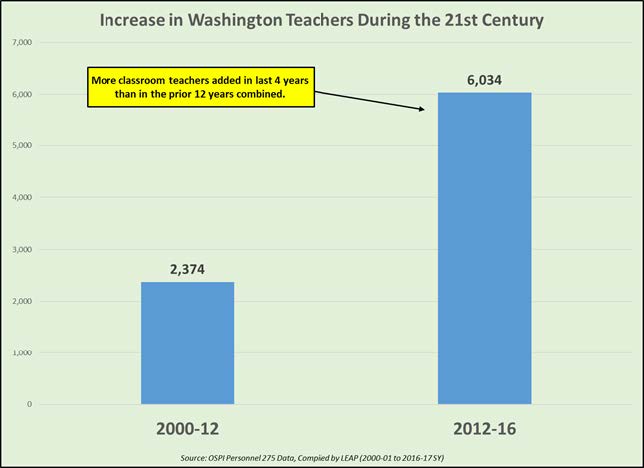An unprecedented increase in teachers has occurred over the last four years, exceeding growth during all preceding years of the 21st century.
Over 6,000 more classroom teachers than four years ago
Take a look at that chart for a minute because what it conveys is remarkable:
- Since the Majority Coalition Caucus (“MCC”) was established in 2012, the number of teachers educating our children has grown more rapidly than in all preceding years of the 21st century combined.1
- Average yearly growth in total teachers: 1,508 new teachers per year since 2012 vs. 198 new teachers per year from 2000 to 2012.
- Put another way: if teacher growth had continued at the 2000-12 yearly rate, it would have taken until 2042 until this many teachers were in Washington classrooms.
Not surprisingly, the student to teacher ratio has gotten smaller in every year since 2012 with the official number falling to 17.9 in the last school year (1.079 million students for 60,425 teachers in 2016-17).2
This was not an accident but rather a concerted effort by the MCC to prioritize education. Indeed, in the 30 years prior, education was a declining state budget priority with non- education spending growing at twice the rate of education.
However, since the MCC took control of the Senate, the reverse has happened with education spending growing at nearly 3 times the rate of non-education spending.3
The newly adopted 2017-19 budget represents the first time since 1981-83 that K-12 comprises more than half of state budget spending.4
That’s Not All: Over 2,400 more teachers budgeted for this school year
The 6,034 increase in the last four years is likely to become a nearly 8,500 increase over five years once the 2017-18 school year is completed.
In addition to funding the final installment of the K-3 class size reduction, the state budgeted for a projected net policy increase of 2,414 teachers in the 2017-18 school year.5 Districts have flexibility to spend state money as they deem fit, so it is possible they will spend the new state funding in ways other than hiring 2,400 additional teachers, but – regardless of the exact tally – the 2017-18 school year will again see a substantial increase in the number of educators teaching our students.
Bottom Line:
Prioritizing education in state budget writing has led to thousands more classroom teachers.
Footnotes
- Teacher FTEs, including teacher librarians: 2000-01: 52,017; 2012-13: 54,391; 2016-17: 60,425.
- Senate Ways & Means & LEAP data. Interestingly, if you take into account all K-12 FTE staff employed by schools (administrators, classified, paraprofessionals) the staff to student ratio is 9.4 (1.079 million students for 114,696 FTE staff).
- For the 30 year spending history from 1981-83 to 2011-2013, see p.2 of https://andyhill.src.wastateleg.org/wp-content/uploads/sites/9/2015/09/Paramount-Duty-Series-Part- I.pdf. Since then, with the MCC in charge of the Senate, education spending (K-12, higher ed, early learning) has grown by 57% (from $16.5 B to $26 B in enacted budget) while all other government spending has grown by 20% ($14.8 B to $17.7 B).
- LEAP (fiscal.wa.gov). K-12 spending comprises 50.3% of the near general fund + opp. pathways appropriation for 2017-19.
- Office of Financial Management analysis, using K-12 Mega Model. It’s worth noting that the 2,414 budgeted increase is just at the policy level. The final phase-in of the K-3 class sizes around the state is also expected to add significantly to the teacher rolls in the state.









